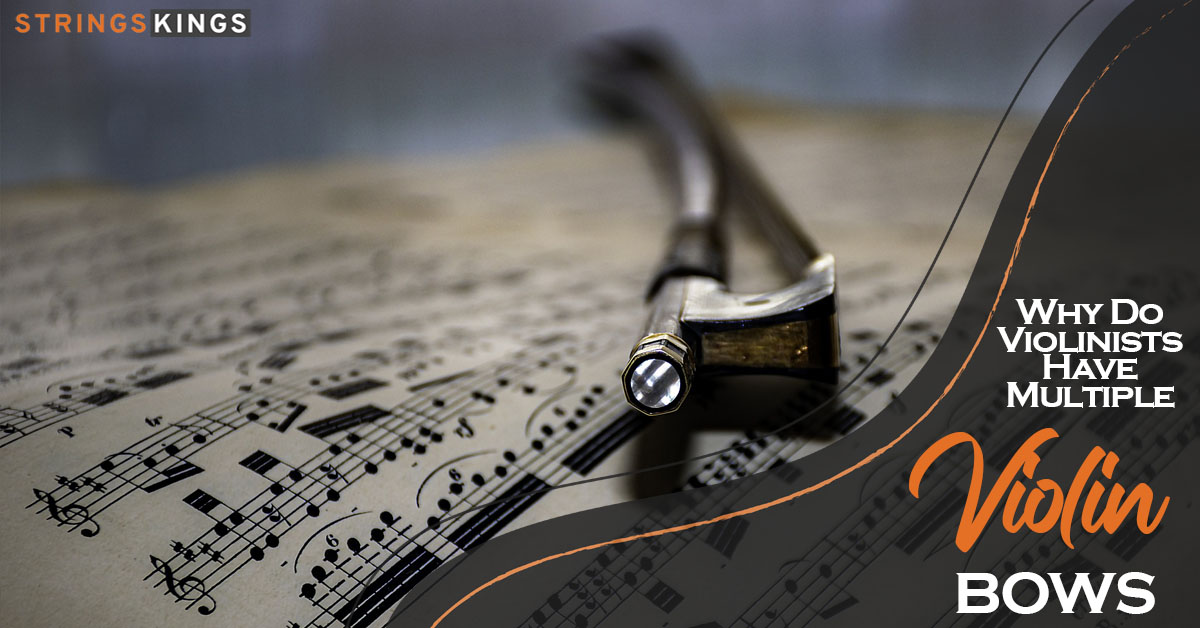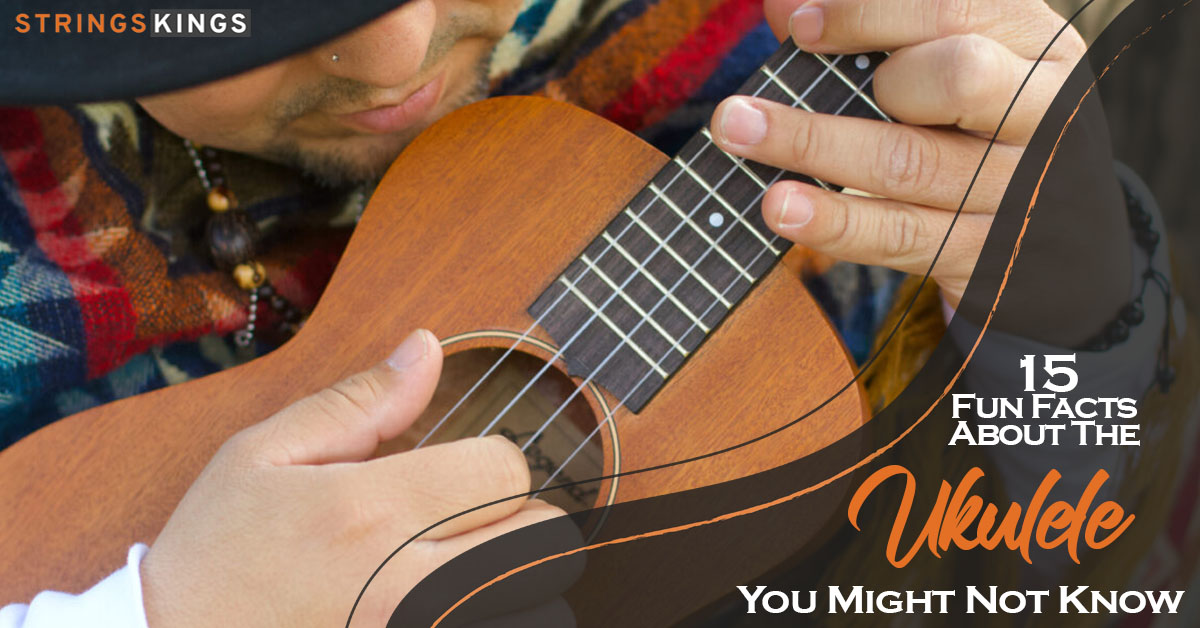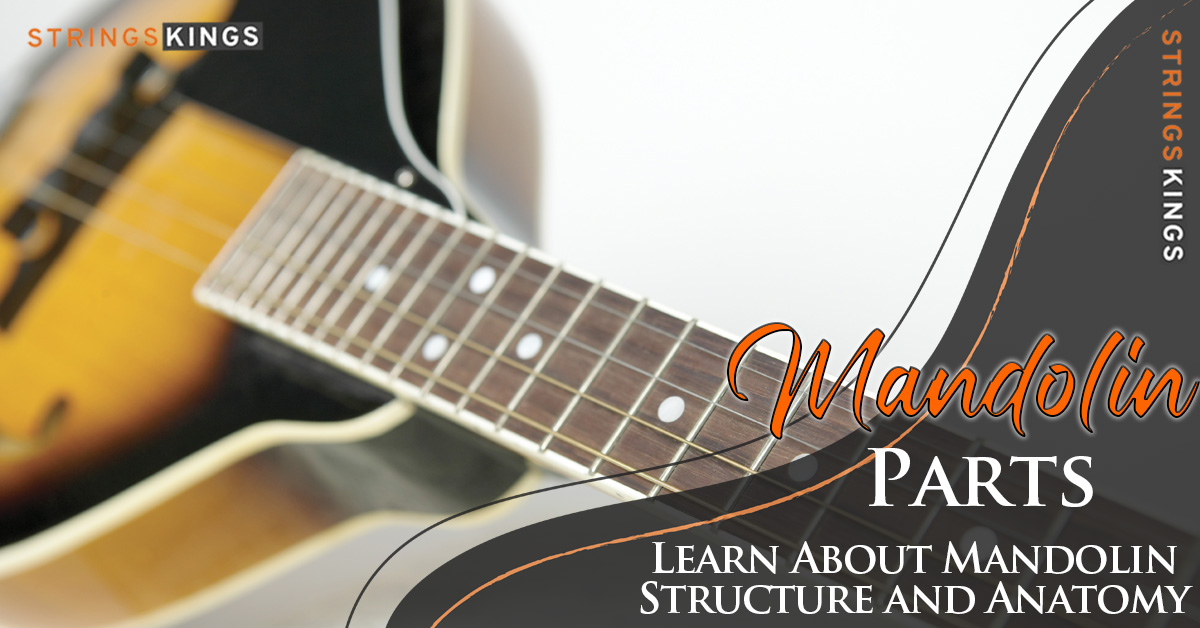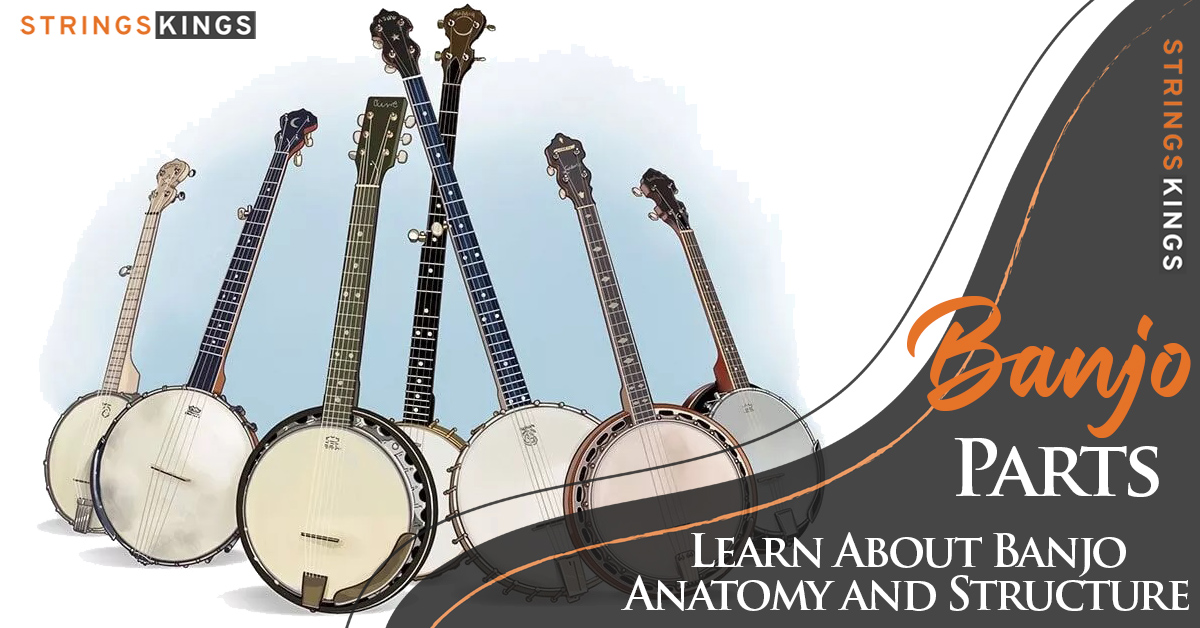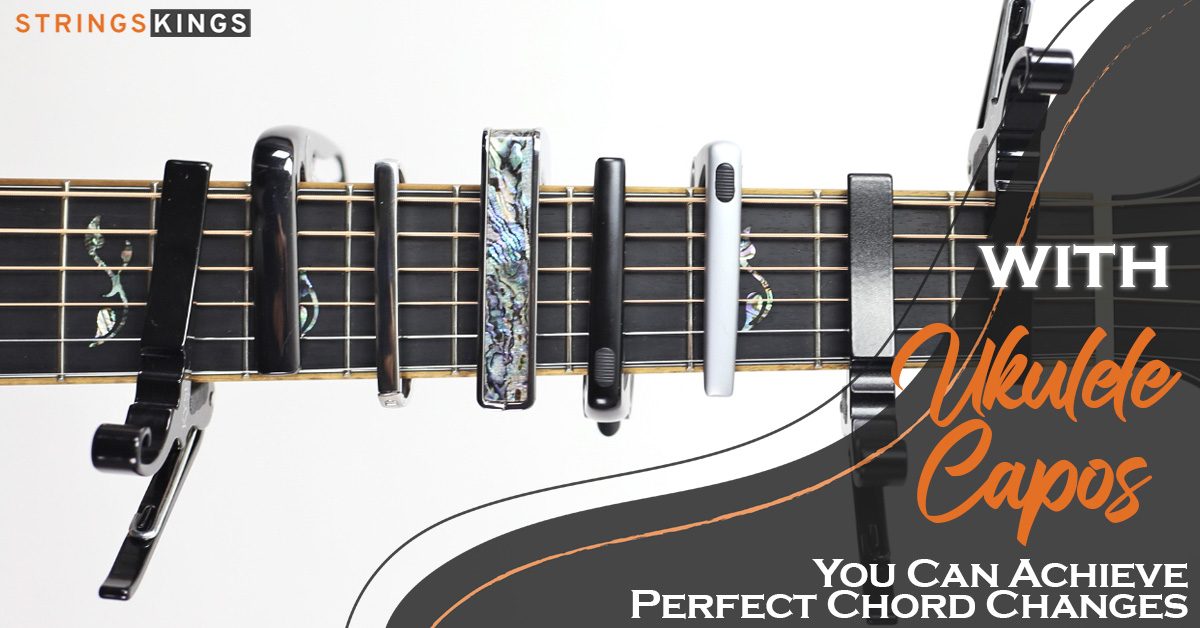Table of Contents
What’s The Difference?
The stringed instrument family is a diverse and interesting one. With a rich historical past dating back over 500 years for the violin alone, it’s no surprise that every instrument comes with its own extraordinary plethora of personality, sound, and possibility for budding music lovers.
But what precisely are the differences between violin viola cello and bass instruments?
Briefly, all four instruments all distinguished by their unique sizes and sounds. Starting from the deep pitch of the double bass all the way up to the sprightly-sounding violin, each has its own individual personality fitted to a range of melodies, harmonies, baselines, and rhythms that may work to perfectly complement each other, or take center stage as a solo.
So how are you going to be sure which instrument is best for you, and which might most align with your hopes and goals as a musician? Let’s dive a bit deeper into the unique qualities of every stringed instrument and highlight precisely what makes each the proper match for the musicians that play them.
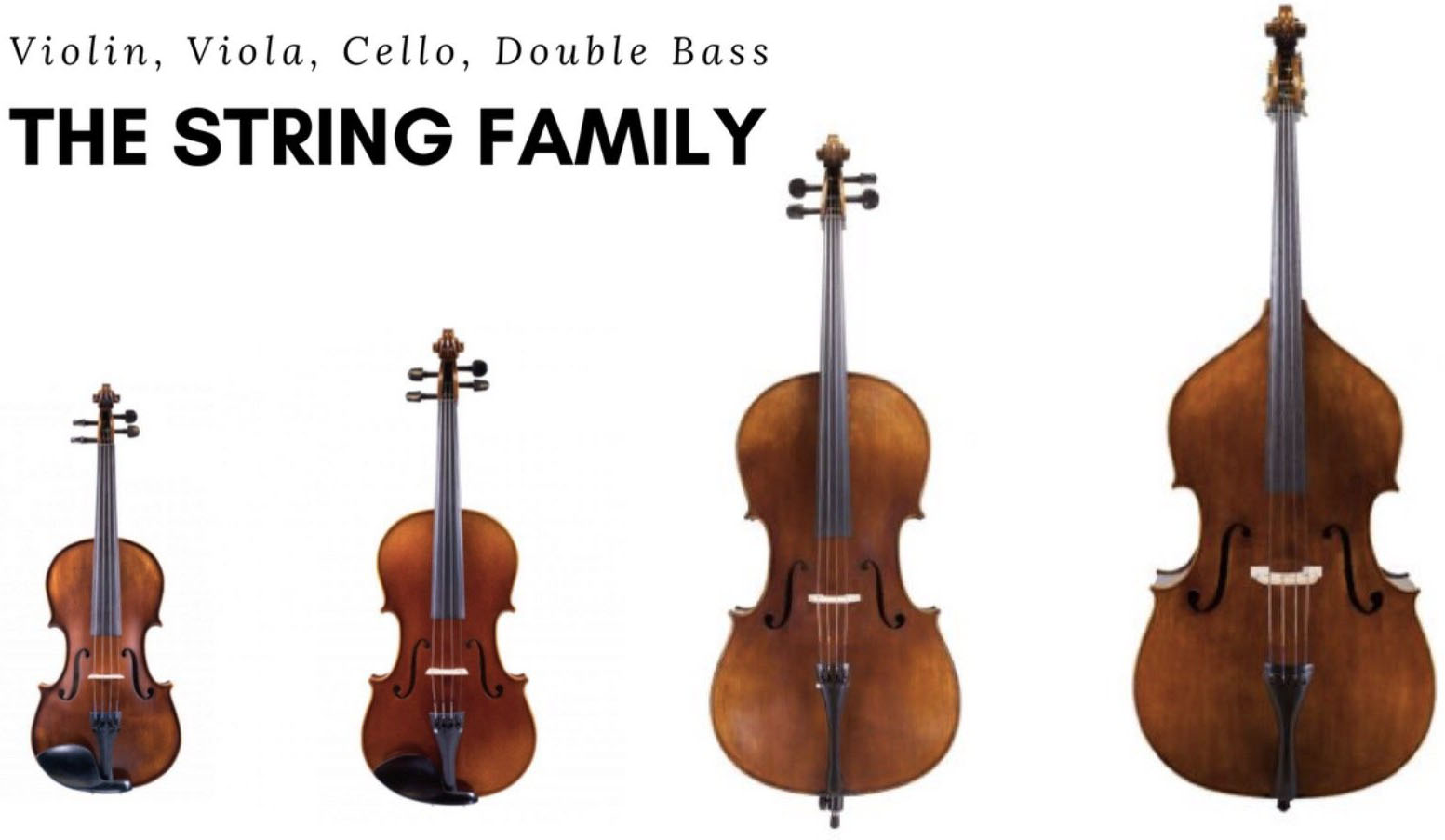
Size
Most individuals can recognize that every instrument is based on their sizes. Bass is the biggest, then the cello, then viola, and at last the violin. Viola is slightly bigger than the violin and appears exactly the same despite the subtle dimension difference. The essential factor to realize about string instrument size is that it doesn’t matter how big or small the student is. All instruments are available in several sizes to match up with even the tiniest kids. Small ladies can play bass and big guys can play the violin.
Double bass
The double bass is available in six sizes: 1/16, 1/10, ⅛, ¼, ½, and ¾.
The size of the double bass chosen by every musician relies on, and in direct relation to, their height and hand size. While the double basses you’ll see playing on the edge of the orchestra can appear quite overwhelming compared to the instruments surrounding it, most of the time they’re actually ¾-sized instruments, which is the commonest size for adults.
Cello
The cello is available in eight sizes: 1/16, 1/10, ⅛, ¼, ½, ¾, 4/4, and ⅞.
As the cello is performed solely from a seated position, the size you select will rely on your height and hand span. While you would assume that the 4/4 (or ‘full size’) is the go-to dimension for adults, the 7/8 is actually preferred because it permits for a slightly smaller and more common hand span.
Violin
As with the cello, the Violin is available in eight sizes: 1/32, 1/16, 1/10, 1/8, 1/4,1/2, 3/4, and 4/4.
Slightly different from the double bass and cello, violin sizing is generally dependent on arm length and span versus height. Most students will begin on a 1/10 or an ⅛ depending on at which age they begin studying – with some kids studying on 1/16s or perhaps a 1/32!
Viola
Violas can be found from 11” and go all the way up to 17”, and even bigger!
Most violists normally play a 15.5” or 16” generally, however in case you have a longer arm span and a sturdy frame you’ll be able to extend to even bigger instruments. There’s debate around which viola size is finest for adults, however, in the long run, it simply comes right down to the preferences of every individual.
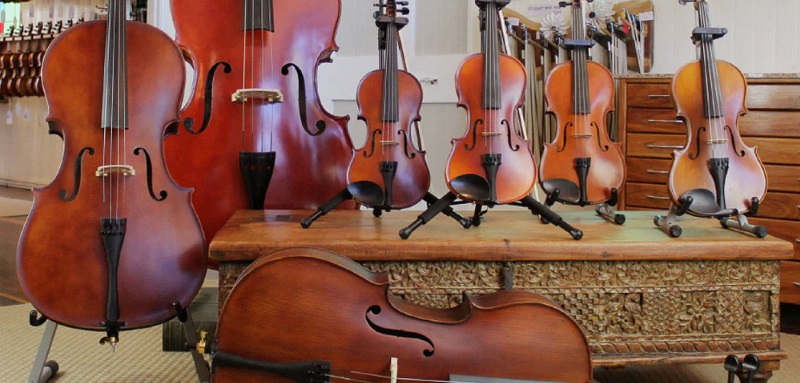
Sound
The double bass has the lowest pitch of the string instruments family, making it a staple in modern symphony orchestras as well as in solo, chamber, jazz, and classical music. It howls at an octave lower than the cello, and acts as the deep, dark harmony and accompanying baseline upon which symphonies are built. Nonetheless, it might additionally perform some lively melodies when used in a jazz context, as it may be played both with the bow and by simply plucking the strings during riffs.
Cellos have a powerful, deep sound, and this instrument from the stringed family could be most closely compared to the human voice. It has a wide range of tones, from warm and melancholic to lighter, brighter notes. They can be used to maintain the base or harmony but can be a weighty and powerful addition to the melody.
After the cello comes to the viola to add an eloquent and sensuous harmony five notes lower than that of the violin. It has a bigger role than the bigger stringed instruments, offering a strong and lively addition to the rhythm and harmony of the violins.
While all these high-quality instruments have their very own unique voice and purpose to lend to an orchestra, maybe none shine quite so brightly as the star of the show – the violin. The violin has the highest pitch of those stringed instruments, maintaining the melody and providing the rhythmic and harmonic undertones for the entire orchestra.
Difficulty
Every instrument in the stringed family comes with its own distinctive set of challenges, most of which are straight affected by the musicians themselves. The artist’s size, experience, and endurance are all elements that affect the success of every instrument, and one that’s easier to deal with for an adult will not be so for students who start as kids.
The double bass, for instance, usually towers above even adult performers, which means they are often quite physically demanding to master, especially for kids bass players. Its close relative, the cello, is also bigger in dimension, however, has the added benefit of being played primarily from a seated position.
The violins and violas, on the other hand, are way light-weight, however, are likely to accompany more complex and fast-paced melodies that may prove more difficult to perfect.
Strings and Range of every String Instrument
Basses are tuned in 4ths (E, A, D, G) and Violins, Violas, and Cellos are tuned in 5ths (A, D, G, C). Violin strings are much shorter and thinner than bass strings and are several feet long and thick in diameter. The violin has super high notes all the way to A7 and may play as low as G3.
Viola can play from C3-E6, so slightly lower than the violin and not nearly as high. Viola additionally has a deeper tone than the violin. Cello can play from C2-C6 and bass can play from C2-C5. The Bass sounds an octave lower than the cello.
Position
Violin and viola are played propped up between the shoulder and chin. Cello is played sitting down and in between the players’ knees, with the end pin caught in the floor for stability. Bass could be played sitting or standing and it additionally uses an endpin for stability. Each one additionally holds their bow in a different way.
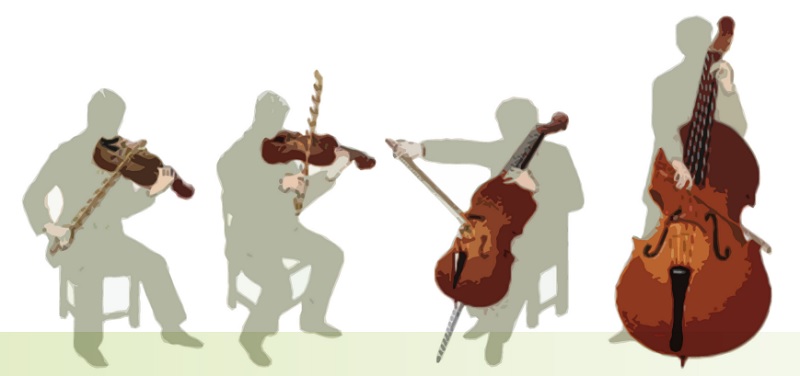
Role in the Orchestra
The violins are usually the melody and are the leaders of the orchestra. The primary chair and first violin player are known as the Concertmaster and the tunes help lead the group. The violas play harmonies, cellos usually go between support, harmony, and sometimes melodies, and basses are often on supportive bass lines.
Competitive Advantage
Everybody plays violin and cello nowadays. The beauty of playing viola or bass is that fewer people do so you have a better chance of doing properly in chair tests and auditions like region and all-state. Individuals who play either violin or viola can simply learn the other one since they’re so similar, which makes them way more versatile. Due to this, finding viola teachers or cello teachers is relatively simple.
Tips About Learning
As we’ve discovered up to now, every instrument within the string family comes with its own unique set of nuances and personalities. The foundations for learning them, however, are more aligned than you may suppose.
Starting the endeavor of mastering any new ability always has its foundations in a single core truth – practice makes perfect. Because the true virtuosos will let you know, along with our family of professionals, musicians are perpetual learners. You have to make the time, all the time, to practice and build on your craft.
And this studying doesn’t simply apply to the melody. Reading music, studying scales, and understanding tuning and maintenance are all important elements of turning into a great (and finally, an excellent) musician.
Our advice? Start small. Take the time to get to know every instrument in person – till you discover your perfect match. From there, discover a teacher, mentor, or online program that you feel serves your needs, and start with an achievable and realistic objective. In case you try to take on Bach during your first lesson, chances are high that your passion for strings will fade as quickly as it started. Keep in mind, that music is a lifelong pursuit, not a short-term recreation.
The Differences Between Violin Viola Cello And Bass?
Famous Pieces and Musicians
There’s actually no ‘right or wrong’ in the case of which instrument any one individual should pursue, although, for a few of the greats throughout the historical past, you’ll be forgiven for believing they have been born with a natural predisposition to excel of their instrument of choice.
The violin has undoubtedly the widest array of instantly recognizable and ‘well-known’ patrons, with the likes of Beethoven, Bach, Mozart, and Tchaikovsky to name only a few of its masters.
With such a varied and rich musical historical past, it’s hard to distinguish one great masterpiece above the other, however, the frequent consensus confirms that Beethoven’s Violin Sonata No. 9, Bach’s Partita No. 2, Paganini’s Caprice No. 24, and Vivaldi’s The Four Seasons are only a few of the various classics that can stand the test of time.
While the viola isn’t at all times the star of the show, some composers have made it their life’s work to create symphonies particularly around highlighting this unique and lively instrument. Amongst the standouts in history surely have to be the Sinfonia Concertante, K 364 by Mozart, Berlioz’s Harold in Italy, and Schumann’s set of short pieces generally known as Fairytale Pictures.
There are no bounds to the depth and breadth of emotion that the cello is ready to portray, with perhaps the most notorious example being Bach’s Cello Suite No. 1. Most if not, or dare we say, all aspiring cellists will turn into intimately familiar with at least one among Bach’s pieces all through their musical journey, that are amongst probably the most frequently performed and widely recognized cello pieces in history.
Modern-day maestro Yo-Yo Ma is probably one of the most prolific and masterful cellists that have mastered Bach, among many others. He has released over 75 albums that talk to his genius and popularity.
The double bass is really unique in the sense that, along with its place in the orchestra, it’s additionally a prevalent member of most jazz bands all through history. As such, you discover quite the eclectic mix of music and masters when looking into its rich past, with everybody from Bottesini and Rossini through to jazz legend Paul Chambers making the cut of notorious double bass maestros.
Wondering About The Differences Between Violin Viola Cello And Bass? Consider This…
So, you see, there actually is not any right or wrong answer in terms of choosing the stringed instrument for you. Each comes with its own unique set of advantages, nuances, and undeniable qualities which have made the whole string family such prolific staples all through modern history.
Given the recognition of violin as well as the cello, selecting either as an instrument opens many doorways and also comes with more competition than others, such as the bass or viola. There are lots of reasons for this, including that violin and cello are more well-known in comparison with the viola, and that the dimensions of the bass can feel prohibitive to some.

